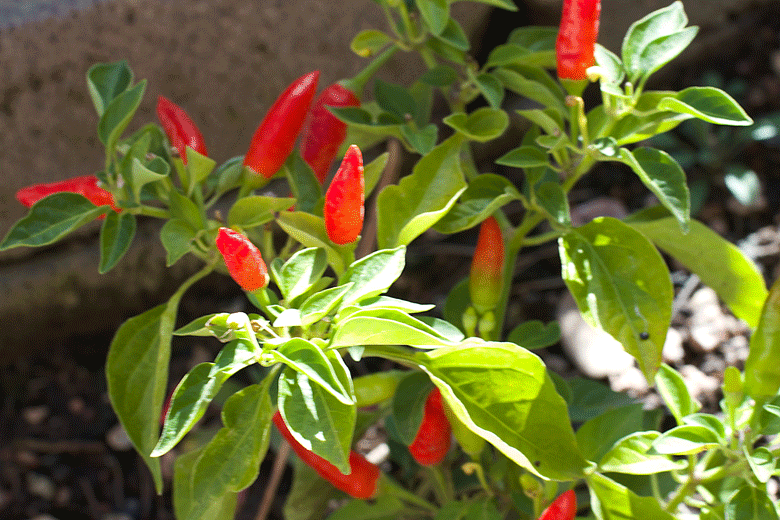The African Birds eye Chilli was bought to South Africa by the Portuguese. It was a Chilli that they introduced to many other countries, including their former colony, Brazil. In Brazil, the Peri – Peri ( Piri – Piri ) Chilli is called a Malagueta Chilli
Malagueta Chilli
While these Chilies may share a common ancestry, they are not the same. They are both of the Capsicum Frutescens species, are Birdseye Chillies and may look the same, but there is a difference.
Chillies react to the environment in which they are grown. While sharing a common ancestor with Malaguetas, Cabai Rawit, Siling labuyo, Xiaomila pepper and Tabasco, the African Birdseye has developed its own character. The Malagueta, for example, has a Scoville rating of 60000 to 10000 SHU, whereas the African Birdseye rates between 150000 and 175000 SHU. Similarly, the Tabasco is rated between 30000 and 50000 SHU, and the Cabai Rawit from Indonesia between 50,000 and 100,000 SHU
The African devil is a small Chilli It only grows to between one and two inches. It turns a bright red when mature .The pods are skyward facing, which is a common trait with Chillies that fall under Capsicum Frutescens. Its bush grows to over two feet tall, and with the warm weather in South Africa can be a perennial
Piquante pepper. ( Pepperdew ®)
This small red Chilli with a Scoville rating of roughly 1200 SHU was discovered in South Africa in 1993. Upon application, the farmer who found it was awarded plant breeders rights to protect the species. He began commercial cultivation and successfully began marketing it in a pickled form under the brand name Pepperdew ® The Pepperdew ® brand is currently owned by Peppadew International (Pty) Ltd. They also sell a variety of other products under this name.
The Piquante pepper resembles a cross between a cherry tomato and a Chilli, but this is purely coincidental. There is no botanical) link. It is part of the Capsicum Baccatum species. Other Chillies that fall into this species include Peru’s most popular Chilli – Aji Amarillo ), Lemon drop Chilli, Pitanga ( from Brazil)., Bishops Crown, Aji Andean, and the White wax Chilli
This Chillies s bush grows to over five feet tall. It is a prolific producer and can produce hundreds of pods in a season. Its pods can get to an inch in diameter
The Chilli has a sharp bite when consumed raw but has a slightly sweet taste in its pickled format. Fantastic if stuffed with cheese and served as an appetizer.
How this hydrid Chillies ancestor found its way to South Africa is part and parcel of the whole intrigue of Chillies. It must have originated in Peru or the Andean region of South America), which is the birthplace of all the original Capsicum Bacctum species. From there, the species has travelled all over the globe and can be found in some interesting places
Other Chilli varieties
A variety of other Chillies are popular in South Africa, including the Long Slim Cayenne, the Habanero and also the Serrano, but these are not indigenous to the country in the way that the African Birds Eye and the Piquante pepper are,
South African recipes with Chillies



